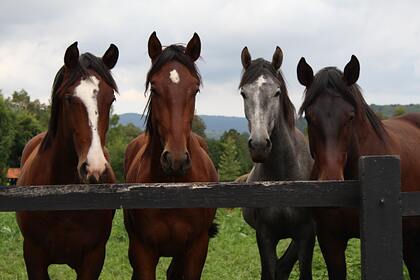An international team of researchers, including Russian ones, has established that horses were first domesticated on the territory of the modern Volga-Don region of Russia more than 4200 years ago. The article devoted to the origin of domesticated horses was published in the journal Nature.
The domestication of horses has radically influenced the course of human history, significantly increasing the speed of human development of new territories and changing the face of agriculture and the art of war. Where and when this happened, however, remained unclear. Previously, scientists found evidence of the use of horses at the site of the Botay settlement in northern Kazakhstan around 3500 BC, but these animals were not the ancestors of modern horses.
A team of 162 scientists analyzed the genomes isolated from the remains of 273 horses from all the assumed places of horse domestication – the Iberian Peninsula, Anatolia, the Pontic-Caspian steppe and the steppes of Central Asia – who lived between 50,000 and 20 years BC. The researchers compared these genomes to those of modern horses.
It turned out that for a relatively long time, horse populations in Eurasia were genetically different from each other. However, at the turn of 2000-2200 BC, a sharp change took place – the genetic profile, previously characteristic only for the lower Volga and Don, began to spread widely outside the region, displacing the populations of wild horses from Western Europe to Mongolia in several centuries.
The researchers found that there were two important differences between the genomes of newly domesticated and wild horses, associated with the positive selection of two genes, ZFPM1 and GSDMC. One is responsible for more obedient behavior, the other for a stronger backbone. In addition, the results of the study show that horses spread across Asia at the same time as chariots and Indo-Iranian languages. At the same time, the migration of representatives of the Yamnaya culture, associated with the spread of Indo-European languages, cannot be explained by the domestication of horses.









